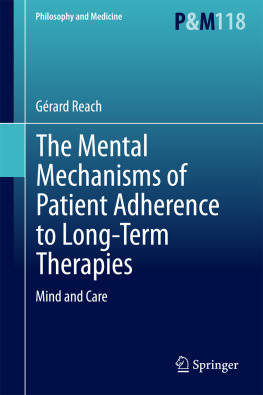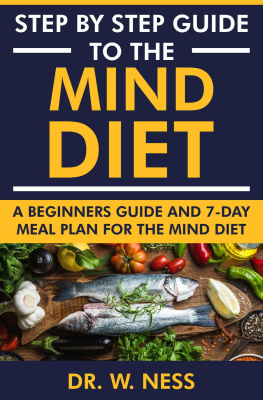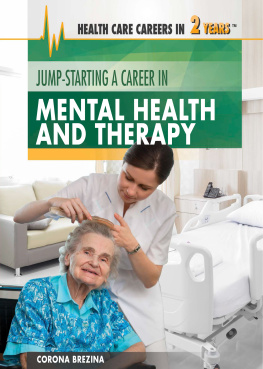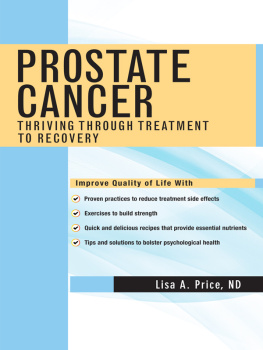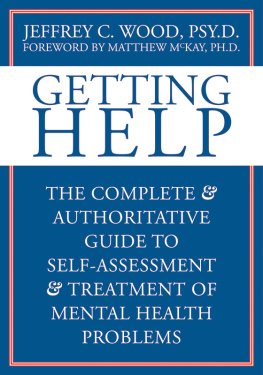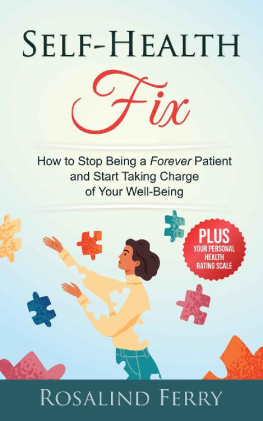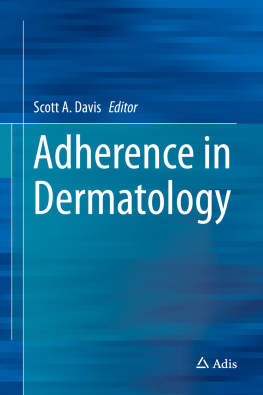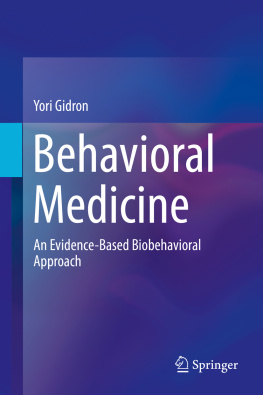1. Introduction: The Doctor , Her Patient , and Their Reasons
Abstract
Patient nonadherence refers to a lack of coincidence between the patient s behavior and clinical prescriptions. At each step in the doctor -patient encounterfrom making a first appointment , to undergoing screening tests, to taking medications and accepting changes in lifestyle , adherence is an issue: For instance, roughly half of the medication prescriptions are not filled. Nonadherence has been demonstrated repeatedly to erode the effectiveness of medical care and is linked with an increased rate in mortality. It has a major impact on health expenditures. A WHO report concluded that increasing the effectiveness of adherence interventions may have a far greater impact on the health of the population than any improvement in specific medical treatment. In this book, I shall try to understand in general the phenomenon of nonadherence. To achieve this goal, I will attempt to describe what our patients are doing when they are adherent, for example, when they come to an office visit, take a tablet, stay on a diet or refuse a cigarette . These various manifestations of adherence must have something in common, i.e. their homology: My goal is precisely to discover what makes these phenomena homologous, without losing sight of differences. This will lead me to suggest that in each one of these cases we are dealing with not just a behavior , but an action . Thus I shall propose an interpretation of the mental mechanisms of adherence to long-term therapies based on the philosophy of human agency: Mind and Care.
A patient visits her doctor ; the doctor makes a diagnosis, prescribes a medication , and the patient takes the medication as prescribed.
Experience shows that this is not always the case, by any means: A number of patients will never complete treatment for an acute illness , and the rate is even higher in chronic diseases. Our patient might not fill the prescription at the pharmacy, or stop the treatment prematurely, or follow only a portion of the doctor s recommendations. And when doctors themselves are patients, their compliance with prescribed treatment is no better, notwithstanding the fact that doctors are even less likely to have their own regular primary care physician and more likely to self-prescribe. The existence of physicians who are overweight, smoke cigarettes , do not exercise , or who abuse alcohol or drugs attests to the fact that sticking with treatment is not a problem limited to patients.
1.1 Adherence and Nonadherence to Therapies: A Definition
Patient non-compliance refers to a lack of coincidence between the patient s behavior , in terms of taking medications , following diets, or executing lifestyle changes, and clinical prescriptions (Haynes et al. ).
As this book will argue, adherence is not an all-or-none phenomenon, and varies not only between people, but also may vary in a given patient over the course of therapy. However, it is a general problem. At each step in the doctor -patient encounterfrom making a first appointment , to undergoing screening tests, to taking medications , or any of the myriad other activities of modern healthcare, adherence is an issue.
1.2 Nonadherence: How Common Is It?
Bearing in mind the difficulty of knowing exactly which actions (or non-actions) are instances of nonadherence (for example, is not contacting your physician at the onset of an illness nonadherence?) rates of nonadherence are typically high. Roughly half of the medication prescriptions written in the United States are not filled: A study of 100,000 women taking an osteoporosis medication found that after 2 years, only 60 % of the total medication prescribed was actually taken (Curtis et al. , 22).
Though these studies produced straightforward results, one should not get the impression that evaluating patient adherence is easy. It often depends on physicians assessments, patients self-observation, pill counts of untaken medication and, more recently, electronic surveillance systems that involve the placement of electronic circuits in the pill bottles registering each use (Blackwell , 6).
Researching treatment adherence is complicated by the fact that it varies so widely: From the trivial (not taking a pill at the exact hour prescribed), to the catastrophic (going into a diabetic coma), to the maybe serious, maybe not (taking three of the four medications prescribed). Nonadherence can engulf the entire treatment, or be limited to one of its aspects. Moreover, adherence might vary over a period of time . A patient may be impressively adherent in the beginning of her treatment, but she may then suddenly become nonadherent; and later, just as suddenly, she may return to adherent behaviors. One would guess that this is a result of some events in her life pregnancy is renowned for spurring a woman into adherencebut this isnt always the case. Often the reasons for patient behavior remain unavailable to the researcher, the treating physician, and even the patient herself.
It is unrealisticand perhaps uncalled forto expect perfect adherence. If a patient takes at least 80 % of a prescribed medication , for example, most practically-minded physicians would regard this as sufficient adherence. In this way, accommodation is made for patient forgetfulness, lapses in refilling a prescription at the pharmacy, and so forth. This forgiving approach also respects the fact that no system of safeguards can, in normal outpatient care , guarantee that the theoretical limit of adherence is met. However, with a disease like AIDS , it is very important that patients are 95 %-adherent: A lower rate runs the risk of inducing viral resistance.
However, a number of patients take fewer than 80 % of the prescribed pills: A study evaluated nonadherence in seven chronic diseases : Hypertension , hypothyroidism , type 2 diabetes , epilepsy , hypercholesterolemia , osteoporosis and gout . Sample sizes ranged from 4,984 patients for epilepsy to 457,395 for hypertension. Taking more than 80 % during the first year of therapy (good adherence) was observed in 72.3, 68.4, 65.4, 60.8, 54.6, 51.2 and 36.8 % of patients, respectively, for the seven disorders. Unexpectedly, the lowest adherence was observed in patients with gout, a disease in which flare-ups are renowned for their exquisite pain (Briesacher et al. ).
1.3 The Consequences of Nonadherence
Given this acknowledgement that routine medical care is able to tolerate some slop, is it possible that nonadherence is not such a big deal after all? Perhapsif patients took 80 % of their medication . But as we saw, the percentage is frequently much lower. Thus, unfortunately, nonadherence has been demonstrated repeatedly to erode the effectiveness of medical care. For example, in a study of antidiabetic medication use , researchers found that as adherence rates dropped, dangerously high blood sugars became more common (as measured by the percentage of glycated hemoglobin, or HbA1c) (Lawrence et al. ).
Nonadherence may have a direct impact on mortality . A study in the diabetes field showed that nonadherence is significantly associated with increased risks for all-cause mortality (Ho et al. ).
Why should nonadherence to a placebo lead to the highest mortality rate? One explanation is that it is a reflection of a more general nonadherence to healthy behaviors. Nonadherers perhaps are less likely to follow a healthy lifestyle, with nonadherence to the medication (beta-blocker or placebo) being just one example. In support of this interpretation is a 2009 study which found that patients who were adherent with one medication (a cholesterol-lowering drug) were more likely to be adherent to a second medication (for osteoporosis) as well. In addition, the adherent patients were also more likely to follow through with screening tests such as mammograms and colonoscopies (Curtis et al. ).

